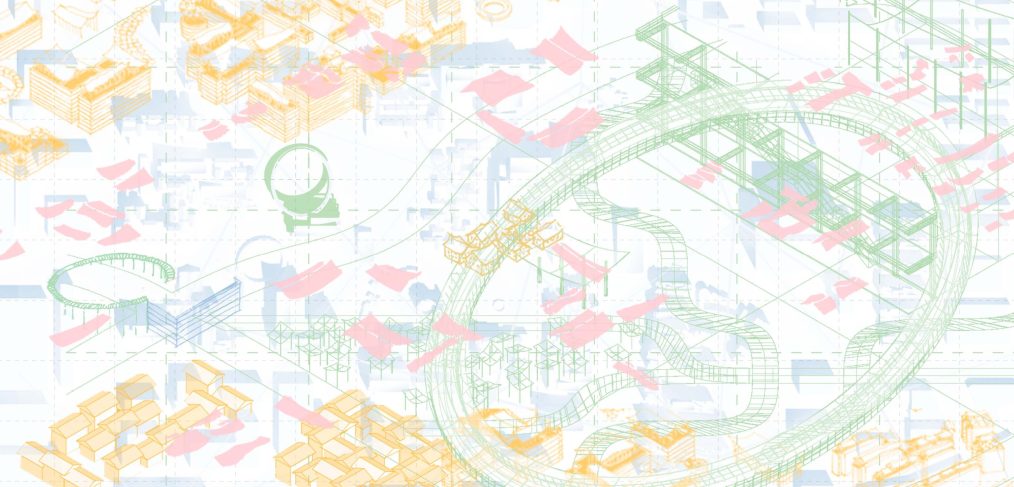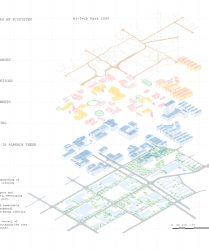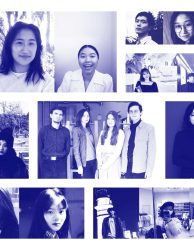
THINK THE CITY AS AN ECOSYSTEM
Team
Name: Remo Ragonese
Nationality: France
Institution / Company: Ecole Nationale Supérieure d’Architecture de Grenoble
Instagram: @gentil_remo
Facebook: Ragonese Remo
Name: Emma Pecqueux
Nationality: France
Institution / Company: Ecole Nationale Supérieure d’Architecture de Grenoble
Instagram: @emma_pcx
Facebook: Emma Pecqueux
Name: Philippe Paumelle
Nationality: France
Institution / Company: Ecole Nationale Supérieure d’Architecture de Grenoble
Instagram: @philippepaumelle
Facebook: Philippe Paumelle
Name: Rachel Boyer
Nationality: France
Institution / Company: Ecole Nationale Supérieure d’Architecture de Grenoble
Instagram: @rachel.byr
Facebook: Rachel Boyer
-EDITORIAL PICK of Community 2050 Competition | Category: Open
“Life between buildings » – Jan Gehl
In the sky over Shenzhen, some of the highest towers in China have been rising out of the ground for almost 50 years. In this same sky, the buzz of climate change can no longer be ignored, putting humanity firmly back in its place, along with its disregard for the planet it inhabits. The rapid development of the city over the last half century is the result of an urban strategy aimed at optimising each and every space through zoning. Today, Hi-Tech Park is mainly composed of buildings from the technology industry. In view of the climatic, economic and urban challenges that are changing the way we live, how can we transform this industrial district into a model for a sustainable, desirable and durable district ? The general approach of this project is fundamentally based on reasoning which is both socio-economic and socio-cultural, as well as environmental. It is time for Shenzhen to look to new horizons and to see itself as a truly cultural, inclusive and attractive city with a rich and diverse ecosystem.
“In our cities, we need all possible forms of diversity, interwoven in a way that complements each other” – Jane Jacobs
This urban design project aims to formalise a model that can be adapted and articulated in three distinct ways.
The first focuses on the study of the “what is already there” and aims to analyse these elements that characterise the environment, through its economy, its fabric, its pedestrian and traffic flows as well as how it is used. This allows us to highlight the various typologies that determine the district’s environment, through symbolising each building; and its uses, which contrast with the urban voids between. If we refer to Leon Krier’s definition of the “true city”, the studied zone lacks public places where people can meet.
The second axis is the “reconfiguration” of Hi-Tech Park. This involves, first of all, the rehabilitation of the spaces and buildings, followed by the breaking down of the district’s zoning, by spatially rebalancing its uses and functions.
The last axis, “exchange”, links the district to the surrounding urban fabric by creating a variety of pedestrian itineraries encouraging users to diversify their routes and to reappropriate their living space.
This proposal provides a sound basis on which to build the city in which each layer of the urban fabric should be the fertile ground for the next layer. In order to ensure that this model flourishes, the temporality and hierarchy of each intervention is essential. Indeed, the process leading to this model would be:
- Conservation and upgrading of existing buildings by creating extensions.
- Densification of space and accommodation capacity, developing housing on the whole plot.
- The construction of remarkable architecture with monumental buildings, creating a strong identity for the city.
- The creation of a variety of pedestrian routes encouraging the user to diversify their routes
“A neighbourhood is not just a collection of buildings, it is a web of social relationships, an environment where feelings and sympathies flourish.” – Jane Jacobs
The architectural design process is materialised through the needs, cultures and elements of place, and it reflects the
identity of the community and the land it occupies. Innovation here is not the imitation of generic models of today’s globalised
architecture, but the meeting point of heritage and ancestral know-how with contemporary scientific knowledge. This architectural
approach tends towards an ‘architecture of place’, it ensures cultural continuity and the transmission of traditions. The district finds
a strong identity through the emergence of a familiar architecture inspired by traditional Chinese buildings which highlight each of
the five
elements.
Fire, Earth, Metal, Water and Wood
This proposed utopia symbolises an architectural project which is rooted in tradition as well as in the future, aims to bring the past to life and make the future desirable. This redevelopment plan, projected for 2050 in this area of Shenzhen, would extend to the surrounding districts in 2075, and to the whole city of Shenzhen by 2100.
#sustainable #desirable #inclusive #community #identity











